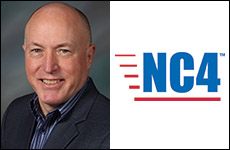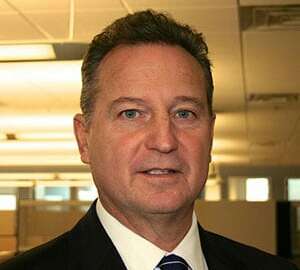 Exclusive
Exclusive Managed services make HHS, other agencies’ help desks more efficient
With managed services, agencies such as the departments of Agriculture, Commerce, Defense, Homeland Security area sharing overhead, surge capacity and costs for...
For 20 years, the Program Support Center has aimed to reduce the Department of Health and Human Services’ annual spending and improve administrative services, but other agencies have joined the shared model. With managed services, agencies such as the departments of Agriculture, Commerce, Defense and Homeland Security are sharing overhead, surge capacity and costs for their help desk services.
Lori Ruderman, director of fed response services for the PSC, said they are open to adding on more customers despite the shared service being housed within HHS. Shared call volume price banding means that smaller customers benefit from being affiliated with larger customers, she said.
“For [smaller customers] to have state-of-the-art infrastructure for 24/7 coverage for a very low call volume, the cost per call would be astronomical,” she said on Federal Insights: Managed Services. “But because they’re rolled in with a much, much larger customer, the price is manageable.”
The PSC provides services including financial management and procurement; occupational health; and real estate, logistics and operations. Ruderman described its federal customer contact centers as call centers for agency employees, grantees or the general public.
“Because it’s a very technologically advanced infrastructure, we have a knowledge bank,” she said on Federal Drive with Tom Temin. “The customer service reps don’t have to be an expert in how to search the knowledge bank.”
Experiencing a heavier call volume
The customer service reps are not supposed to go off script, but if they cannot find the answer they can progress to a “tier 2 solution,” Ruderman said. PSC tries to keep these instances at less than 10 percent.
Having two locations — in Barbourville, Kentucky, and Bossier City, Louisiana — means that customers who need call centers open 24/7, such as Grants.gov, are less vulnerable to calls going unanswered due to weather- or illness-related closings. Ruderman also said this helps balance call volumes.
Such surges can happen, for example, anytime government officials so much as mention the Affordable Care Act or IRS. Because the call centers do not handle either, they can redirect callers to the right government office.
“That’s why we like to use a managed service provider because they can adapt to all this changing surge capacity in very quick responsiveness,” she said.
Calls may be monitored
When people call one of the two call centers, one of more than 100 customer service reps will get the call. They are encouraged to answer within 30 seconds and most pick up within 20 second, Ruderman said. General Dynamic IT tracks these rates as well as how often callers abandon the phone due to a lack of response.
Ruderman also said, almost with a laugh, that General Dynamics IT “monitors the calls for quality assurance. So that really does happen.”
Switching from a federal employee model to a managed services model was done long before Ruderman joined the PSC, but she said the need for more technical know-how was a major reason for the change. Previously, home-grown call centers were staffed by individuals without the necessary expertise and if they were out of the office or went to lunch, calls went unanswered.
“And so the [PSC] offered a solution to consolidate a number of these little programs and realized that we know what we know but the vendor community knows a lot more about call centers,” she said. “The managed service provider takes care of the technical for me. I know what I need, I know my requirements but I don’t need to know the technical infrastructure.”
This change also benefited the PSC because the federal IT acquisition lifecycle is slower than the rate at which technology advances. By the time an award would be approved, she hypothesized, the technology in question would have changed and the PSC would be outdated.
Doing the research
Ruderman said the knowledge bank updates about 30 questions per month but new system releases, or new customers, also prompt modifications. They use the ServiceNow expert system, which is a commercial cloud-based product from CSRA, which General Dynamics IT acquired this year.
But the terms and conditions for managed services differ between commercial and federal clients. Ruderman said in the case of the latter, the biggest challenge to overcome is IT security.
“The vendor has to be able to get through the authorization-to-operate process, and that process can be lengthy,” she said. “And especially in this particular case where the contact center is tapping into current HHS IT infrastructure, there has to be very strong security and the security process took several years for this particular case. And if we couldn’t get through the ATO process we would just be shut down, they’d pull the plug.”
Another challenge is the personnel security process of getting the individuals badged and credentialed. That can lead to delays and frustrations at times, she said. As a best practice for those interested in managed services, Ruderman recommended extensive market research and engaging the industry early.
“We do industry days,” she said. “We also use requests for information to give the industry an opportunity to tell us what’s out there.”
The PSC also leverages existing managed service relationships across government and industry alike to find out what works. But it is important not to get tunnel vision, she said.
“It’s really easy to see one vendor’s solutions and say, ‘Wow, that’s incredible. That’s what I want,’ and not look at any other solutions and miss out on opportunities,” she said. “New and emerging technologies are changing every day and it’s so important to grow into our contracts rather than out of them, that we have to be forward thinking.”
Copyright © 2024 Federal News Network. All rights reserved. This website is not intended for users located within the European Economic Area.
Amelia Brust is a digital editor at Federal News Network.
Follow @abrustWFED





